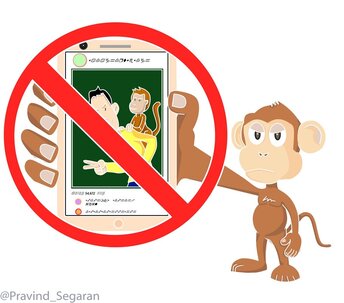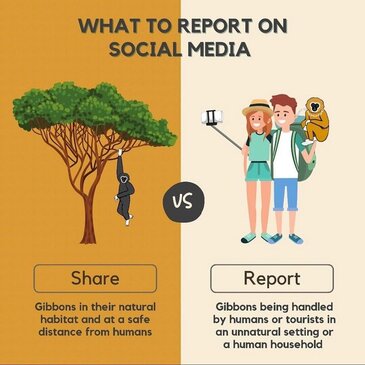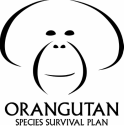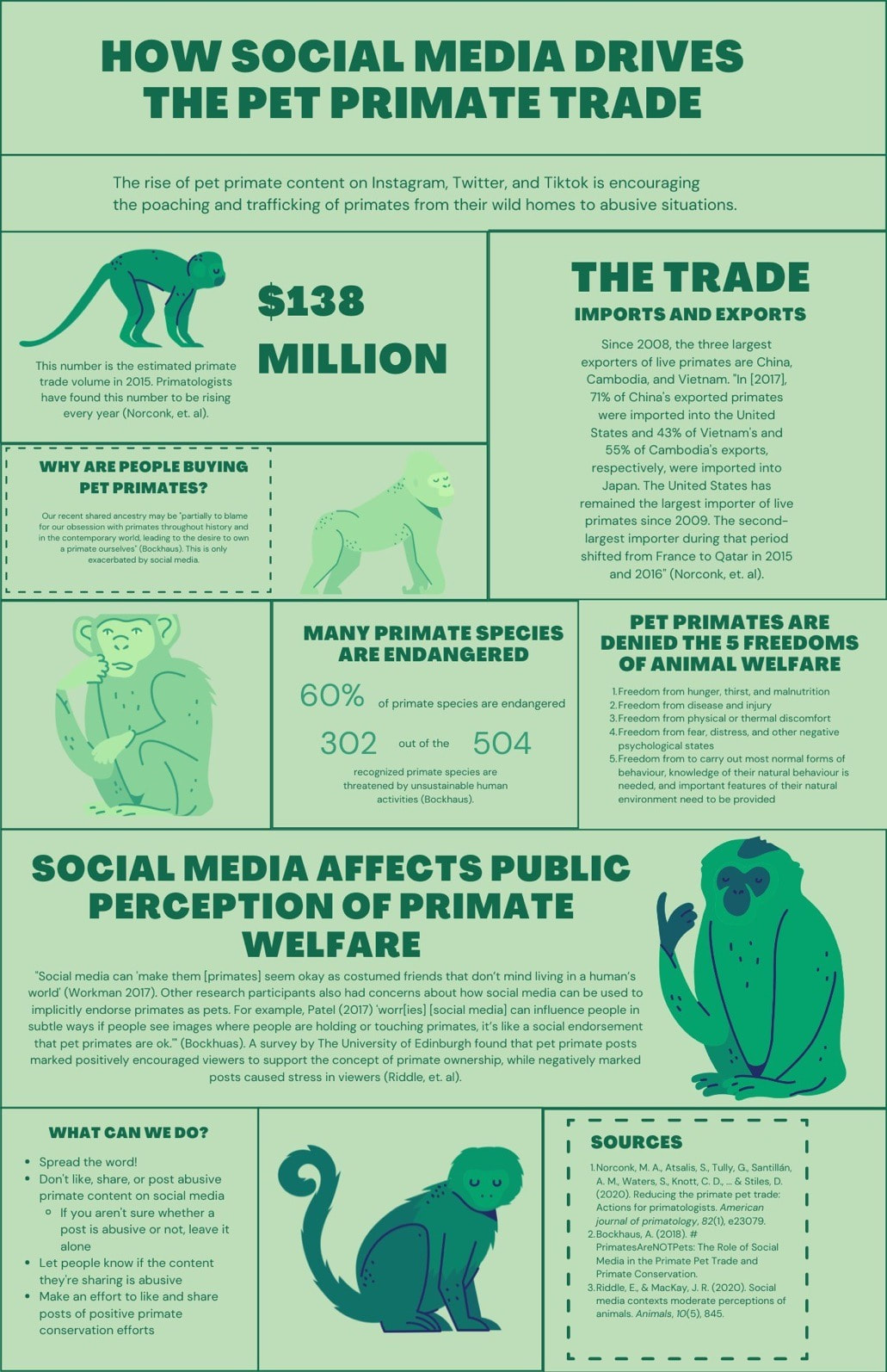Primates in Social Media

Social media may be a resource for great ape and primate conservation, but it can also be a hindrance to their preservation in the wild. Pictures and videos of primates circulate on social media every day, and often go viral from people “liking” and “sharing” the content with others. Before clicking the “like” or “share” button, people need to ask themselves whether the content is really supportive of primates and their needs. Popular social media posts can represent primates in inappropriate and unnatural situations, negatively affecting their welfare. Although the pictures and videos may look cute, they further contribute to the exploitation of great apes and other primates. Virality of these primate posts increases the demand for pet primates. Unfortunately, it leads people to want a cute little primate for themselves. It can also create a skewed idea of the status of the primate population in the wild. If a primate can be bought as a pet, do you think most people know that that species may also be endangered in the wild? Perhaps the sharing of the content is contributing to their numbers decreasing, but how well known is that among the general public?
When scrolling through your social media feed, be mindful of the sharing content that may negatively contribute to the primate pet trade.
When scrolling through your social media feed, be mindful of the sharing content that may negatively contribute to the primate pet trade.
|
There are a few key questions you can ask yourself to determine whether the content you are seeing on social media is appropriate to share:
|
What can YOU do?
- Spread the Word
- Don't Like, Share or Post abusive primate content
- If you aren't sure, leave it be
- Inform people the content they're sharing is abusive
 Infographic by Gibbon Guardians
Infographic by Gibbon Guardians
It's Not All Bad!
Although there are instances where social media posts of primates can be detrimental to their conservation, it’s not all bad! Social media has become an incredibly positive tool for conservation as well.
By “liking” and “sharing” content that shows animals in accredited spaces or in the wild demonstrating their natural abilities, social media can be great for spreading conservation awareness. People can make emotional connections to primates and their plight in the wild, which can help raise awareness and funds for their protection.
Spread the word on social media and educate your friends and family about the implications of sharing inappropriate primate content on social media. We can all do our part to diminish the exploitation of great apes and primates; it just takes a thoughtful “like” and “share.”
Although there are instances where social media posts of primates can be detrimental to their conservation, it’s not all bad! Social media has become an incredibly positive tool for conservation as well.
By “liking” and “sharing” content that shows animals in accredited spaces or in the wild demonstrating their natural abilities, social media can be great for spreading conservation awareness. People can make emotional connections to primates and their plight in the wild, which can help raise awareness and funds for their protection.
Spread the word on social media and educate your friends and family about the implications of sharing inappropriate primate content on social media. We can all do our part to diminish the exploitation of great apes and primates; it just takes a thoughtful “like” and “share.”
For More Information:
- Best Practices of Image Use in Non-Human Primates by the IUCN
- Imagery Guideline for Great Apes by the Jane Goodall Institute
- "Is that Social Media Post Apepropriate Content to Share" by Ashley Sullivan

